Who is the true anti-Soviet?
The USSR is the Union of Soviet Socialist Republics, but was it really Soviet? We can confidently say that it is not. Formally, the Bolsheviks hid behind the Soviets, practically depriving them of power, contrary to the Constitution of the USSR.
About the Soviets
As early as the First Revolution of 1905, the first Soviets of Workers’ Deputies appeared. In 1917, various Soviets began to be created throughout the country. This is how these organs of democracy came into being.
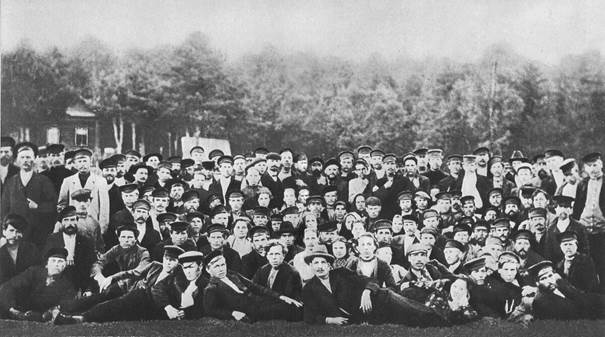
Ivanovo-Voznesensk Soviet of Workers’ Deputies. From the site
Perhaps the most famous is the Petrograd Soviet of Workers’ and Soldiers’ Deputies, which practically became the second power in the country in opposition to the Provisional Government (the so-called dual power).
In July 1918, the Fifth Congress of Soviets of Workers’ and Soldiers’ Deputies adopted the Constitution of the RSFSR, which streamlined the structure of the Soviets. The All-Russian Congress of Soviets was recognized as supreme power, and between its convocations the All-Russian Central Executive Committee of Soviets.
The All-Russian Central Executive Committee of Soviets is the supreme legislative, administrative and controlling body in the period between congresses.
Of course, one can refer to the Civil War, but in fact the leadership of the country was carried out by the Council of People’s Commissars (SNK), headed by V. Lenin, and the command of the army was carried out by the Revolutionary Military Council, chaired by L. Trotsky.
The practical removal from the Soviets from power caused discontent among the population, and many demonstrations against the Bolsheviks took place under the slogan “Soviets without Communists.” This shows that the population had a positive attitude towards the Soviet system.
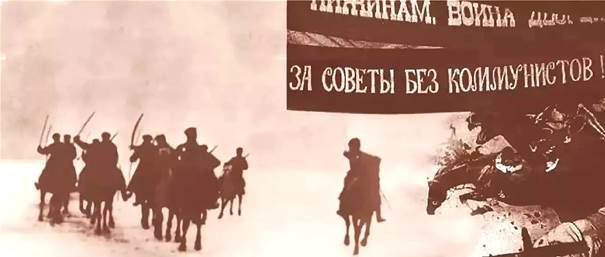
As early as August 1918, the Bolsheviks began a struggle against the Soviets in the countryside, and a decree was passed on the creation of committees of the poor, which could be nothing more than opposition to the local Soviets.
After the formation of the USSR, the system was preserved, the actual power was the Council of People’s Commissars, and the Soviets were declared the supreme power as a screen. In fact, such a decorative figure was the chairman of the All-Russian Central Executive Committee M. Kalinin, formally the head of state, but no one took him seriously.
The Stalin Period
In the initial period of the RSFSR and the USSR, the Bolshevik Party was not the leading party in the country, although it exercised its influence through party members in the governing bodies of the country. Therefore, three posts were really important in the country: the chairman of the Council of People’s Commissars, the leader of the party and the chairman of the Revolutionary Military Council. Initially, the first two were combined by V. Lenin.
During Lenin’s illness and after his death, A. Rykov became the chairman of the Council of People’s Commissars, and G. Zinoviev became the leader of the All-Union Communist Party (Bolsheviks).
G. Zinoviev hated L. Trotsky, who, in turn, considered himself equal to V. Lenin, and on this basis claimed leadership in the country. In addition, Trotsky had an army in his hands.
In the unfolding struggle for power between G. Zinoviev and L. Trotsky, it was possible to remove the latter from the post of chairman of the Revolutionary Military Council, as well as to reduce his influence in the party. M. Frunze became the head of the army. And after his death, K. Voroshilov, one of Stalin’s henchmen in the Civil War, became the People’s Commissar of Defense. In this way, the command of the army was in the hands of J. Stalin.
The promotion of J. Stalin, who headed the apparatus of the Central Committee of the All-Union Communist Party (Bolsheviks), a position at that time rather bureaucratic and economic, became unexpected. Taking advantage of the unfolding struggle, Stalin increased the role of the party bureaucratic apparatus. He began to select party members for leading positions in it. This led to the dependence of party leaders at various levels on the apparatus of the Central Committee, headed by J. Stalin.
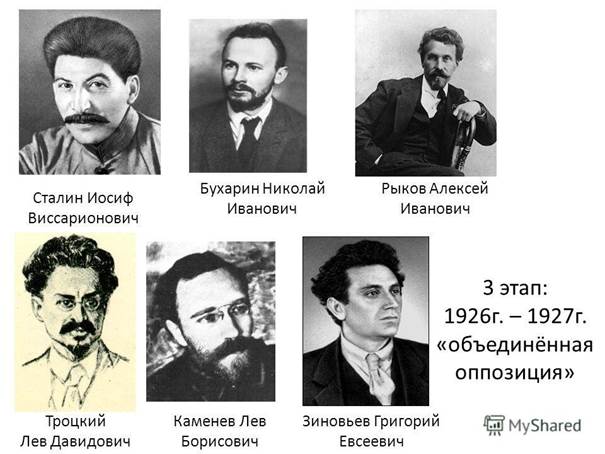
The rise of J. Stalin led to the formation of the United (Left) Opposition, which united the former enemies of G. Zinoviev and L. Trotsky. The opposition, among other things, opposed the bureaucratization of the party. Relying on the enlarged apparatus and uniting the right-wing members of the party (N. Bukharin, A. Rykov, and others), Stalin was able to smash the United Opposition. By 1928, the party bureaucracy, headed by Stalin, had completely taken over the party. Separate attempts will be made within the Party against the Party bureaucracy, and against Stalin personally. But the bureaucracy created by Stalin would really lead the country and the party until the collapse of the USSR, which was carried out by part of this nomenklatura, with the aim of plundering the country and personal enrichment.
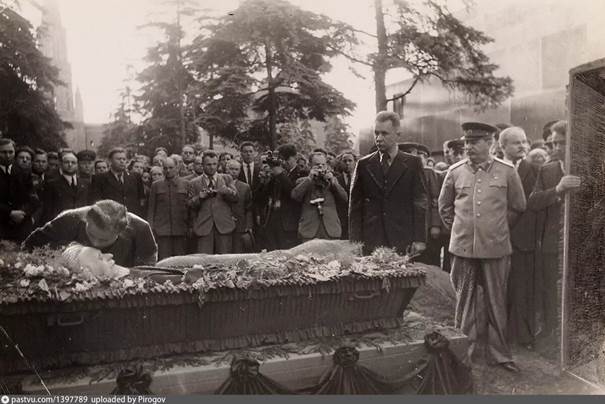
Funeral of M. Kalinin.
Having seized power in the country, Stalin turned the Soviets into a pure fiction, a clear example is the fact that on the instructions of I. Stalin, the wife of the nominal head of the USSR, M. Kalinina, was put in a camp. She was released only for her husband’s funeral, during which she walked next to Stalin.
All-Union Congresses of Soviets
The First All-Union Congress of Soviets was held in 1922 in connection with the formation of the USSR.
In 1924, the Second Congress adopted the Constitution of the USSR.
In 1925, the Third Congress accepted the Turkmen and Uzbek SSRs into the USSR, and also considered the state of industry and its further development.
The Fourth Congress in 1927 considered the industrialization of the country and the situation in agriculture.
The Fifth Congress in 1929 adopted a five-year plan for the development of industry and considered questions of cooperative construction in the countryside.
In 1931, the VI Congress accepted the Tajik SSR into the USSR and discussed agricultural issues.
VII Congress in 1935 General Questions.
In 1936, the VIII Congress adopted the new (Stalinist) Constitution of the USSR. An article (Article 126) on the role of the Party appeared.
In accordance with the new Constitution of the USSR, the Supreme Soviet of the USSR is the supreme body of the USSR. Elections to it were held by universal suffrage, but on an uncontested basis until 1989. It met for only two days to rubber-stamp the decisions prepared by the bureaucrats of their Central Committee of the Communist Party of the Soviet Union.
In fact, all power in the country was concentrated in the Central Committee of the All-Union Communist Party (Bolsheviks), and then in the Central Committee of the CPSU, that is, in the hands of the party nomenklatura. The main decisions were made by a joint resolution of the Central Committee of the CPSU and the Council of Ministers.
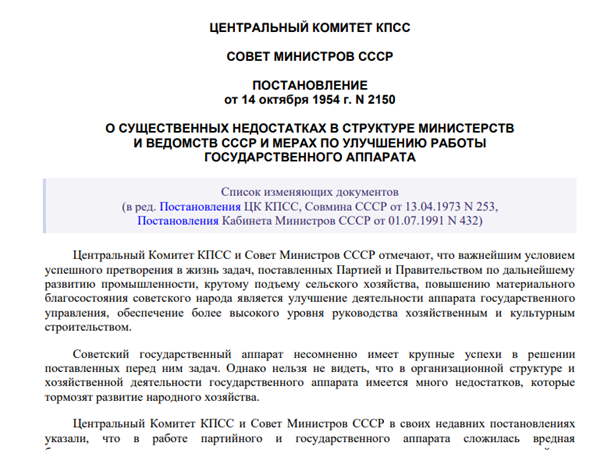
Thus, the true anti-Soviets are the Communists, and Joseph Stalin personally, who finally formed such a system. Because it was they who usurped real power from the Soviets, making them purely declarative bodies.
It was only with the introduction of alternative elections to the Soviets in 1989 that the Soviets appeared, which tried, using the opportunities provided for by law, to make decisions that met the interests of the voters. In accordance with the Constitution and the law, they could do so. Which, of course, did not please the part of the party nomenclature that seized power in the country, as it could become an obstacle to the plundering of the country.

Storming of the White House, 1993.
Therefore, after the coup d’état in 1993, the Communist Party of the Soviet Union, Boris Yeltsin, dissolved the Soviets, replacing them with representative bodies that had practically no power. This was fully in line with the policy of the Bolsheviks-Communists.
So who are the true anti-Soviets? Stalin, Yeltsin, Gaidar and others like them, or people exposing their nefarious activities.
